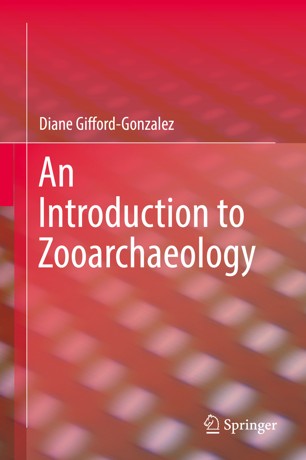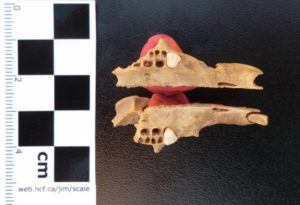University of Sheffield Archaeology department threat ‘blow to UK’
Tag: zooarchaeology
Intro to Zooarchaeology and More Free Books
Publisher Springer has temporarily made hundreds of textbooks available to download for free during the coronavirus pandemic. For archaeologists, there’s Diane Gifford-Gonzalez’s ~600 page zooarchaeology book. A sample of other free books is below, and you can find all the rest at Springer. Thanks to @jriveraprince for pointing this out on Twitter.

An Introduction to Zooarchaeology
An Anthology of London in Literature, 1558-1914
ArcGIS for Environmental and Water Issues
Writing for Publication: Transitions and Tools that Support Scholars’ Success
Social Media Management: Technologies and Strategies for Creating Business Value
Of Cigarettes, High Heels, and Other Interesting Things: An Introduction to Semiotics

Free Books from the Cotsen Institute of Archaeology
Several archaeology books from the backlist at the Cotsen Institute at UCLA are available for free download:
An Archaeologist’s Guide to Chert and Flint – Luedtke 1992
The South American Camelids: An Expanded and Corrected Edition – Bonavio 2009
Maya Zooarchaeology: New Directions in Method and Theory – Emery 2004
A Conservation Manual for the Field Archaeologist – Sease 1994
About 20 more titles on Greek, Mesoamerican, and California archaeology are available from the Cotsen Institute of Archaeology Press.
Zooarchaeology for Free: Antiquity’s Online Collection
Pet cats, hunting dogs, and underwater mammoths: the journal Antiquity has assembled a group of recent zooarchaeology articles and made them freely available on their Online Collections page.
Urban Archaeology and Foodways in South Carolina
New book review of Charleston: An Archaeology of Life in a Coastal Community by Martha Z. Zierden and Elizabeth J. Reitz published in the Anthropology Book Forum of the American Anthropological Association.
Fox Squirrel (Sciurus niger) from a Nineteenth Century Archaeological Site in New Jersey
There are no confirmed historic records of fox squirrel from New Jersey, although it is present in surrounding states. One subspecies, the Delmarva fox squirrel, was recently removed from the endangered species list after a concerted effort was made in Delaware and neighboring states to help it.
While fox squirrel bones are found in zooarchaeological assemblages in other states, there is, only prehistoric archaeological site in New Jersey where fox squirrel has been identified. In this article (with a 2012 date, but only recently published), the first archaeological record of fox squirrel bones from a nineteenth century archaeological site in New Jersey is reported.
Early Hominins and Meat-Eating
Comprehensive review article on use of meat by early hominins from The American Scientist.
Worked Bone Archaeology Book Published
The Worked Bone Research Group, part of the International Council for Archaeozoology (ICAZ) has just published the proceedings from the 10th Meeting of the WBRG, held in Belgrade in 2014. The book contains over 40 articles on worked bone from both prehistoric and historical archaeological sites.
The book, Close to the Bone, is edited by Selena Vitezovic and can be downloaded for free at the WBRG site.
Unalaska Animal Bones May Get Dumped
Well, this could turn out badly. Hopefully the zooarchaeologist is using hyperbole to encourage Fish and Wildlife to figure out their own rules.
If a “huge” load of scientifically valuable prehistoric animal bones aren’t returned soon to the Museum of the Aleutians, they may end up in the trash in Canada, according to a frustrated scientist in Victoria, British Columbia, who is encountering tax problems while trying to avoid international legal difficulties.
It turns out that the $6,000 set aside for shipping three shrink-wrapped pallets of nearly a half million bones back to Unalaska is causing financial headaches for the private research firm, Pacific Identifications, according to zoologist and treasurer Susan Crockford.
“We had to pay taxes on these funds to carry them forward to this year. We are unwilling to pay taxes on these funds for yet another year,” Crockford said in an email to the U.S. Fish and Wildlife Service. “It means that if we cannot get the import permit required to ship the material by August of this year at the latest, we face having to do something unconscionable to professional archaeologists and research scientists: send all 57 boxes to the dump.”
Most likely, no federal permits are needed, according to Andrea Medeiros, a Fish and Wildlife spokeswoman in Anchorage, since the bones came from Native corporation land, and not federal property, under the terms of the Archaeological Resources Protection Act. However, Fish and Wildlife Service officials were still reviewing the requirements of international treaties involving endangered species and migratory birds.
Read the rest at Alaska Dispatch News
3D Printing of Passenger Pigeon “Artifictions”
Just published and open access is a new article that demonstrates the value and potential of 3D scanning and printing for osteological identification of passenger pigeons and other extinct or rare animals.
Some zooarchaeologists have been producing 3D images of animal bones for a while now. This article describes the next step, the creation of actual physical replicas (which they dub “artifictions”, as opposed to artifacts) using 3D printers. The practical goal is to increase the reliable identification of animal species (especially rare or difficult to distinguish ones) in archaeological faunal assemblages, which now is dependent on the zooarchaeologist having ready access to a large and varied collection of actual animal skeletons. Why aren’t digital representations of bones enough?
because the scale of digital models is based on the size of the screen upon which they are viewed, making identifications by direct comparison difficult. Artifictions, however, can be scaled accurately and physically placed alongside actual skeletal elements to enable more direct visual comparison and identifica-tion of specimens, comparable to the use of a reference specimen from a comparative skeletal collection. Additionally, the 3D scanned models can be used for species identification based on selected point-to-point morphometric measurements. (p. 16)
For examples, the authors use the passenger pigeon and the harelip sucker, a freshwater fish that, like the passenger pigeon, went extinct near the beginning of the twentieth century.
While there are still some technical (and budgetary) limitations with the 3D printing process, they argue convincingly that “this is the only non-commercial approach that will make available physical representations of skeletal elements from extinct species for quick distribution to a large number of researchers.” (p. 19) Efforts are underway to make these models available for download. Next, somebody needs to buy me a 3D printer.
Reference:
Manzano, Bruce L., Bernard K. Means, Christopher T. Begley, and Mariana Zechini
2015 Using Digital 3D Scanning to Create “Artifictions” of the Passenger Pigeon and Harelip Sucker, Two Extinct Species in Eastern North America: The Future Examines the Past. Ethnobiology Letters 6(2):15-24.

